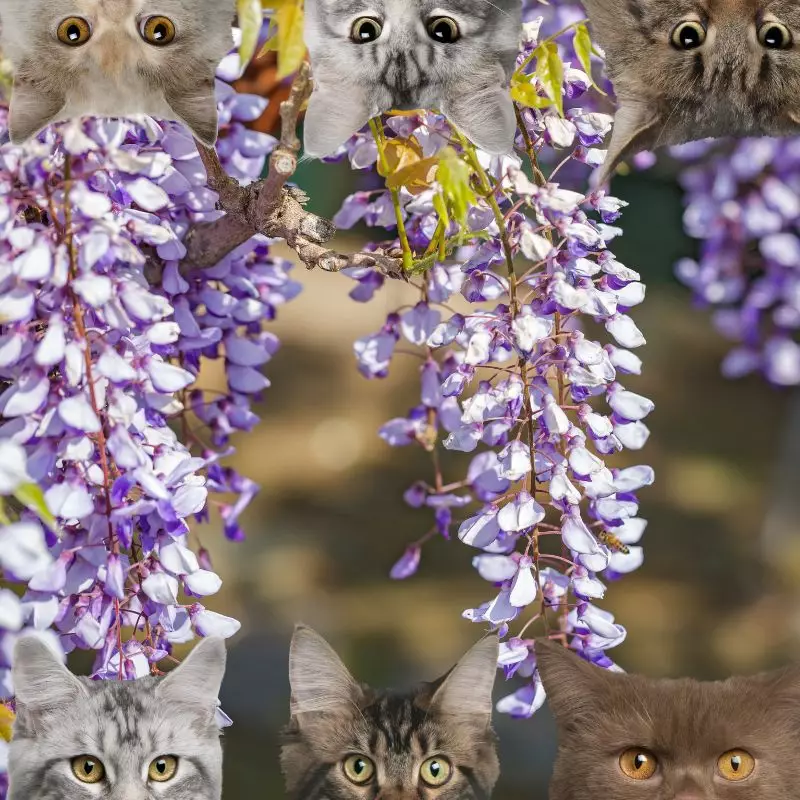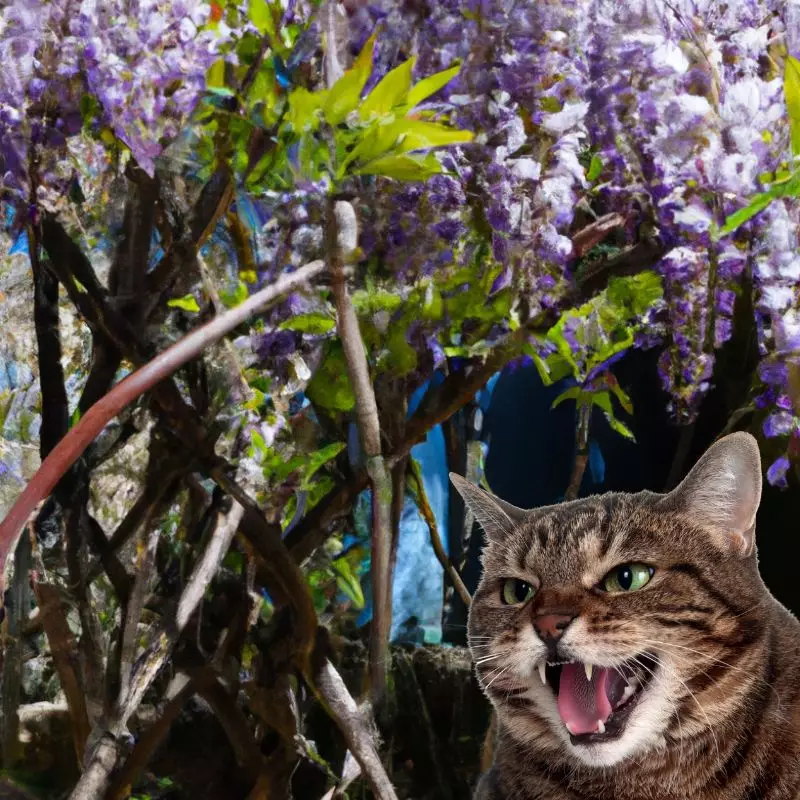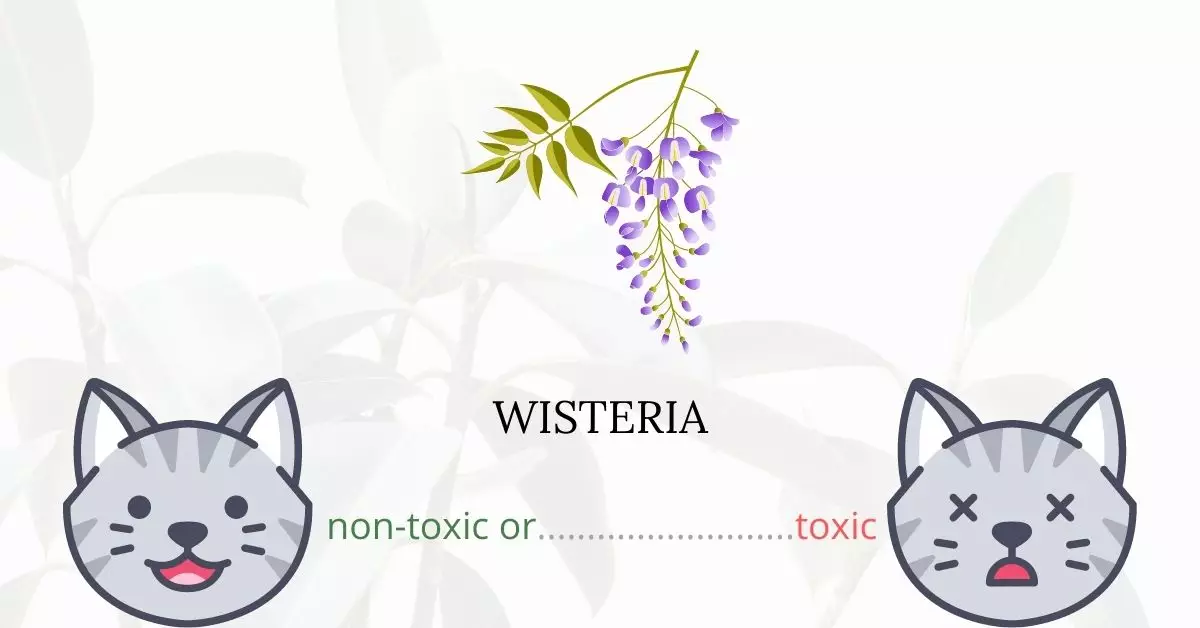Wisteria, while visually striking and often enveloping in its beauty, is indeed toxic to cats, as well as to dogs. This plant, characterized by its robust and pervasive vine, can dominate other flora within its vicinity, potentially monopolizing an entire garden. The seeds and pods of the Wisteria plant are particularly hazardous to cats due to the presence of toxic lectins, which once entered into the circulation, can lead to the coagulation of red blood cells. In addition to lectins, Wisteria also contains a harmful glycoside known as wisterin, present not only in the plant’s vibrant blooms but also in its leaves, making even wilted leaves a potential threat. The ingestion of wisterin can result in a series of gastrointestinal complications in cats, such as stomach pains, nausea, vomiting—which can sometimes be bloody—diarrhea, and even symptoms of depression.
This article has been curated with the valuable contributions of a team of experienced Doctors of Veterinary Medicine (DVMs), ensuring the provision of accurate, reliable, and up-to-date information regarding the toxicity of Wisteria and its potential risks to cats. With their invaluable insights and our extensive research, including high-authority resources such as ASPCA and PetMD, we strive to deliver a comprehensive understanding of the potential impacts of various plants on our feline companions, focusing here on the Wisteria plant. Our collaborative efforts are aimed at raising awareness and providing pet owners with the knowledge necessary to maintain a safe environment for their beloved pets, preventing unintended exposure to toxic plants like Wisteria.
Clinical Signs of Wisteria Poisoning in Cats

Wisteria poisoning in cats can manifest through various clinical signs, each resulting from the toxic components present in the plant. If a cat comes into contact with, smells, or ingests Wisteria, the following clinical symptoms may occur due to the presence of toxic lectins and glycoside wisterin:
- Oral Irritation: Ingesting Wisteria can cause noticeable discomfort in a cat’s mouth. This is usually the first sign and occurs due to the immediate contact of the plant’s toxins with the oral mucous membranes, causing irritation and inflammation.
- Stomach Pains: The toxins present in Wisteria irritate the gastrointestinal tract, leading to abdominal discomfort and pain, manifested by the cat’s unusual postures or vocalizations.
- Nausea and Vomiting: The irritation progresses through the gastrointestinal tract, causing nausea and, subsequently, vomiting. Vomiting can sometimes be accompanied by blood, indicative of damage to the stomach lining or other internal injuries.
- Diarrhea: The presence of wisterin and toxic lectins disrupts the normal function of the gastrointestinal system, leading to diarrhea, which can further lead to severe dehydration if not addressed promptly.
- CNS Depression: Extreme cases of Wisteria poisoning can affect the cat’s central nervous system, resulting in signs of depression such as lethargy, decreased responsiveness, and, in severe instances, collapse. This occurs due to the neurotoxic effects of the wisterin glycoside on the brain and nervous system.
- Severe Dehydration: Due to excessive vomiting and diarrhea, severe dehydration can occur, leading to a weakened and collapsed state in cats.
Each of these signs points to a severe and potentially lethal reaction to Wisteria poisoning, emphasizing the critical need for immediate veterinary attention. The progression of symptoms can lead to irreversible damage or even be fatal, so it is essential to seek professional veterinary care at the earliest sign of Wisteria ingestion or contact. By acting promptly, cat owners can significantly increase the chances of recovery and prevent long-term health complications for their feline companions.
First Aid and Treatment of Wisteria Poisoning in Cats

Symptomatic treatment will be provided by the veterinarian. The treatment process will most likely involve vomit induction, administering activated charcoal, performing gastric lavage, and fluid therapy.
Medications may also be prescribed accordingly based on your cat’s condition. The vet will continue monitoring your cat’s condition and prevent developing severe symptoms and other complications.
Recovery from Wisteria Poisoning in Cats

Cats who received prompt veterinary assistance will most likely recover. Recovery time may vary depending on the cat’s general wellness prior to poisoning. It is vital to get immediate treatment since wisteria poisoning can be lethal if the symptoms were left untreated.
Prevention of Wisteria Poisoning in Cats
If wisteria is known to thrive in your area, keeping your cats indoors is the best way to keep them safe. You can keep your cats confined and occupied while you are gone by using cat homes, cages, and playpens.
If you love plants but have cats at home, check out these lists:





